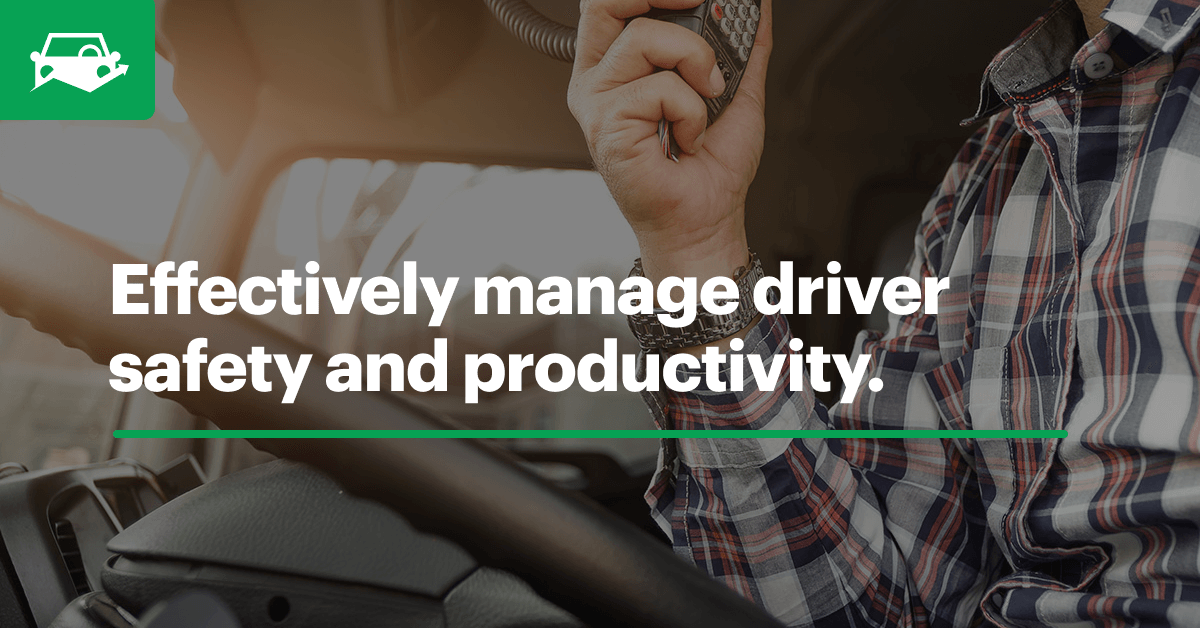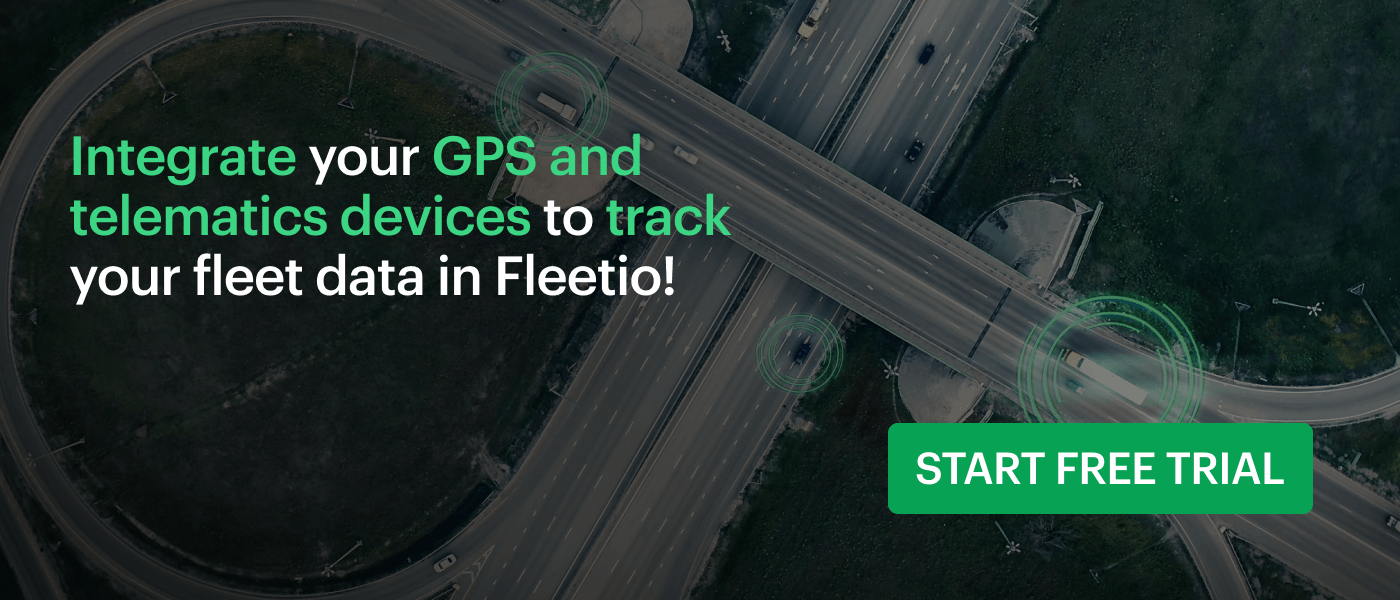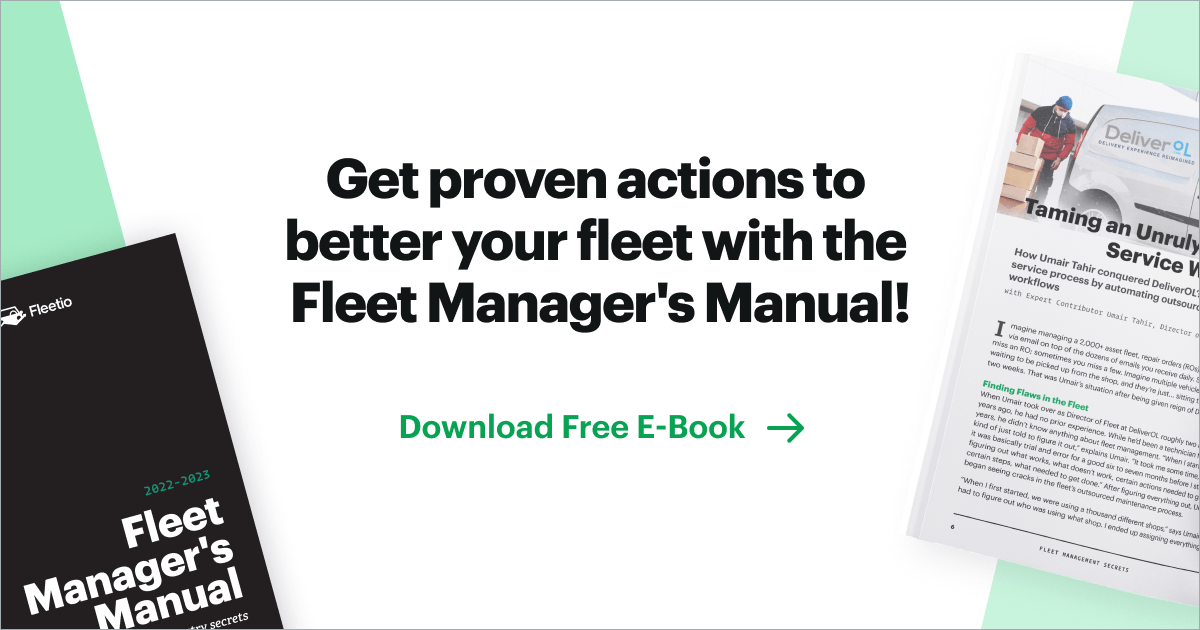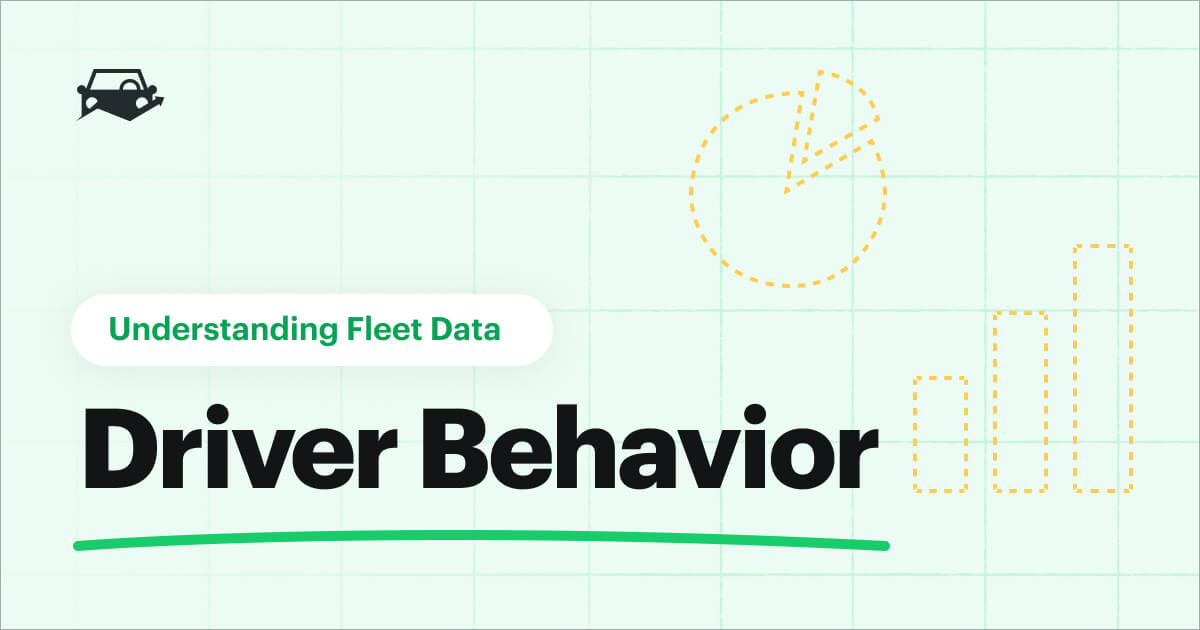An effective driver management system leverages fleet data to ensure the safety and productivity of your drivers.

The Benefits of a Driver Management System
While it’s crucial to have maintenance and inspection systems in place, many fleet managers don’t have the same strategies for managing drivers. Implementing a driver management system allows you to get a comprehensive look at your drivers, their productivity and the overall safety of your assets.
When establishing a driver management strategy, think about what systems you currently have in place and how you can leverage them to increase driver productivity. Improving current practices such as safety and inspections can set your drivers up for success.
A driver management system can automatically upload vital information for your fleet, such as fuel usage and telematics data. This way, you’re able to receive real-time data on your drivers and assets and identify areas to improve.
1. Leverage GPS and Telematics Data
Your drivers are constantly on the move, and it’s crucial to have an easy way to track their day-to-day productivity. Integrating a telematics device into your driver management system provides access to up-to-date data including driver status, location and safety habits.
This type of information helps cultivate trust with your drivers and ensures they are safely operating your vehicles. More importantly, the level of visibility managers get inside their driver management software encourages proactivity.
When you integrate your GPS and telematics data into your driver management software, you can ensure accuracy in odometer readings. Values are uploaded automatically, allowing you to stay on top of preventative maintenance tasks.
Leveraging telematics data in your driver management system gives you peace of mind that your drivers are being safe and productive on the road. It also allows you to better communicate with your customers on arrival times or unexpected delays.
To further ensure driver safety, consider gamification of driver safety. Incentivize safe driving with a monthly reward to your driver with the safest record (gift cards, free lunch, etc.). You’d be surprised how competitive your drivers can be when incentivized.
2. Track Fuel Usage
Because fuel is the largest recurring cost for fleets, it is crucial to track fuel usage on your vehicles. With a fleet fuel management software, data collection is simplified. You’re able to monitor trends and easily compare mileage with the distance expected to travel for the day.
Unfortunately, fuel theft is a common concern for fleet managers. Integrating fuel cards with your driver management software automatically logs and compares fuel transactions against vehicle locations. Geolocation discrepancies exceeding a certain threshold are flagged for review.
Fuel theft is usually caused when drivers fill up personal vehicles or use their fuel cards for personal items. With fleet fuel cards, you can track and control driver spending by setting gallon limits and restrictions regarding time of day.
Tracking fuel usage and comparing it to your telematics data can also help maximize fuel economy. Consider training drivers to find the best routes and the best fuel prices in the area to lower costs on fuel.
3. Streamline the Inspection Process
Some drivers may find inspections to be tedious, particularly when they’re still using paper inspection forms. They are more likely to breeze through inspections and cut corners in order to get back on the road. This practice can potentially compromise assets.
Drivers are more likely to perform thorough inspections when you have an easy process in place. The best way to improve your inspection process is by going paperless and leveraging a vehicle inspection app.
Streamlining the vehicle inspection process through electronic daily vehicle inspection reports (eDVIR) can reduce inspection times by 65%, allowing your drivers to get back on the road quickly.
eDVIR allows drivers to conduct quick, comprehensive inspections with clicks and swipes. When issues arise, drivers can take and upload photos of issues in the app, allowing you to begin addressing issues immediately.
Having drivers perform inspections through driver management software also ensures integrity by allowing you to see GPS locations for every inspection. This way, you know inspections are getting done at the correct times.
4. Set Safety Standards
Last, but certainly not least, an effective driver management system takes a proactive stance on safety. Not only does this keep your organization compliant, but it can prevent unexpected financial burdens.
One of the best ways to cultivate driver safety is by emphasizing the importance of safety standards with new hires and have regular safety meetings with your drivers. Be sure to have your safety standards printed in an easy-to-find space in your shop or office for easy reference.
Another way to ensure driver safety is by putting “How Am I Driving?” stickers on your vehicles with a number to call to report reckless driving. This empowers the public to report reckless driving, and it keeps safety and responsibility top of mind for your drivers.
Upholding fleet safety standards is the best way to ensure compliance and avoid racking up violations and tickets. Commercial Driver’s License (CDL) violation points can lead to suspended licenses and fines, resulting in unplanned downtime and an impact on your bottom line.
There can also be even more severe impacts when safety protocol isn’t followed. If a driver gets into an accident, insurance premiums can rise. Worse still, if an accident happens due to driver negligence, lawsuits could occur.
To avoid these issues, it’s important to have a driver management software that allows you to quickly determine the cause of violations and prevent future violations and accidents. With a comprehensive look at each driver’s route, you can track reports and understand when and why a driver isn’t following safety standards.
Start your free trial or request a demo of Fleetio Manage and implement a driver management system for your fleet!





